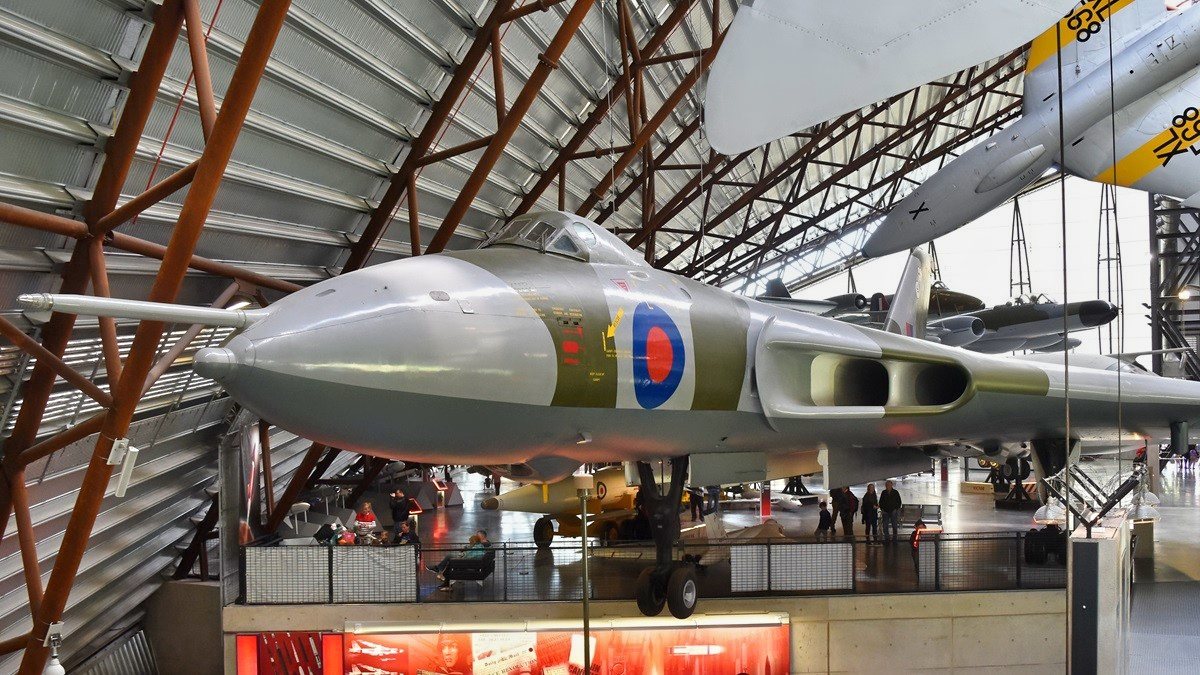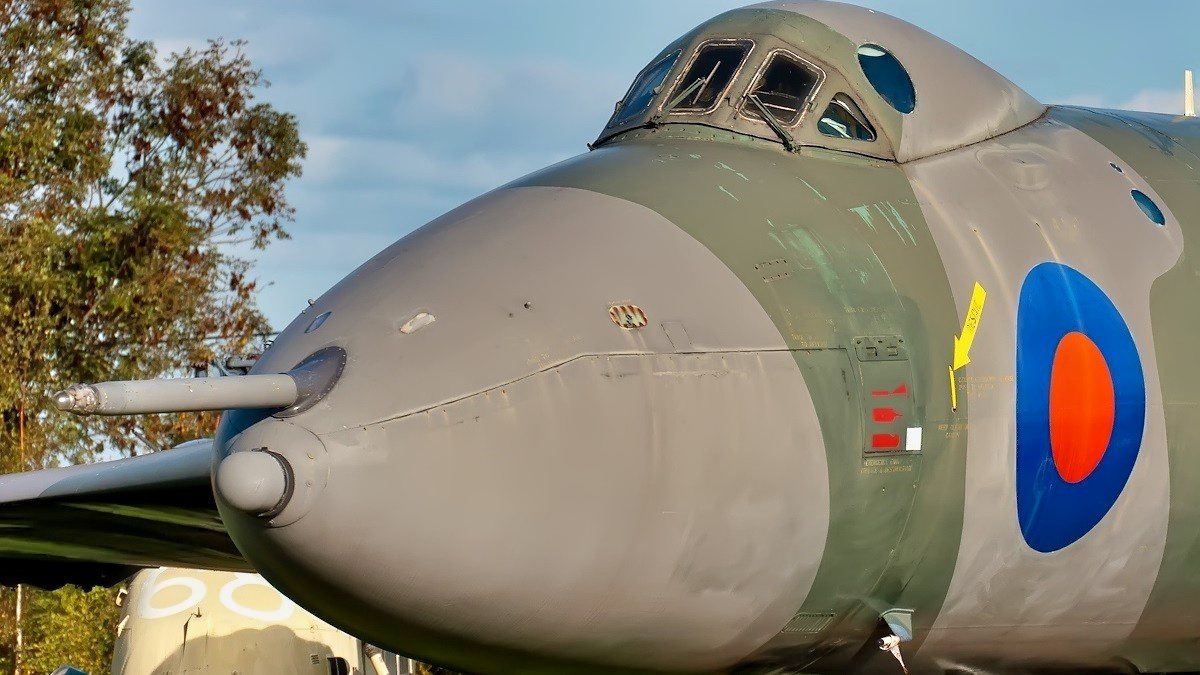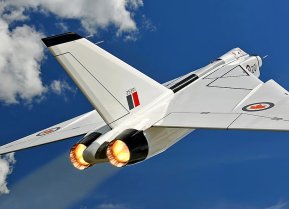The Avro Vulcan Bomber Had One Mission: Wage War on Russia
The Avro Vulcan was a delta-wing high-altitude long-range warbird that even took the longest bombing run in British history against Argentina.
Meet the Avro Vulcan: Located closer to the Soviet Union than the United States, the United Kingdom also had an important dual mission to protect the homeland and take the fight to the USSR if needed during the Cold War. Britain produced a bomber just seven years after World War Two that withstood the test of time – flying for over 30 years. The Avro Vulcan had the speed and the ceiling to make it a formidable airplane.
The Avro Vulcan was a delta-wing high-altitude long-range warbird that even took the longest bombing run in British history against Argentina (Operation Black Buck) during the Falkland Islands War in 1982.
The Vulcan Had an Important Mission: Strike Back Against the Soviets If Needed
The Vulcan was part of the Royal Air Force’s “V bomber” contingent. It was nuclear-capable, and the United Kingdom depended on it for its nuclear deterrent mission during the first 15 years of the Cold War.
Long-range Would Come In Handy Toward the End of Its Service Life
The Avro Vulcan prototype first flew in 1952. Unfortunately, one prototype crashed at an air show in 1958 and killed the pilot, but the second prototype tested well. It was designed to carry the Blue Steel nuclear missile. This was a stand-off weapon, and the Vulcan could fire it from outside Soviet air defense systems.
The Vulcan could be refueled in the air, extending its range. By 1970, the Vulcan gave up its nuclear-deterrent role to submarines and became a conventional bomber. Its unique design and 52-degree sweep back allowed it to have excellent payload, fuel capacity, and maneuverability.
Almost a Flying Wing Design
The first prototype had four Rolls-Royce engines with a total of 13,000 pounds of thrust – two under each wing. The second prototype had Rolls-Royce Olympus 101-series engines. The cockpit was located at the front of the fuselage, forward of the wings and engines.

There were large engine intakes under the wings. The propulsion system allowed the airplane to be very nimble for a bomber. And the design almost made the bomber into a flying wing.
Then They Were Ready for Serial Production
An entire squadron of Vulcans was ready by 1957 despite another fatal accident. They were designed to be survivable with an early warning system, some elements of electronic warfare, and jamming, plus the ability to dispense chaff and flares.
A new variant of the airplane was made in 1958 that featured new engines that had better thrust. Avionics were updated. The re-fueling capability was added. By that year, Avro had produced 89 Vulcan bombers.
Surprisingly, the bomber had five crew members – a pilot and co-pilot, a weapons operator, a navigator, and a radioman. Ejection seats were installed for the pilot and co-pilot but everyone else would have to bail out if the worst happened.

Big Weapons Payload
The airplane had an ahead-of-its-time innovation with its internal bomb bays and could carry 21 one-thousand pound bombs when operating as a conventional strike airplane. When nuclear-capable it had the Blue Steel as mentioned above.
The airplane could also carry Shrike anti-radar missiles that it used during the Falklands. It was during the campaign against Argentina that the Vulcan saw action.
Made the Argentines Pay on Ultra-long Operation
Operation Black Buck was the most daring mission that the British embarked upon since World War Two. The Vulcans had to cover 3,900 miles over the ocean, drop bombs or fire missiles on low runs below radar range, and then re-fuel to return to Wideawake Airfield on Ascension Island in the mid-Atlantic. Each Vulcan had the support of numerous tankers.
This was a complicated mission for the tankers, but they performed brilliantly. The Vulcans dropped bombs on Argentine air strips at Port Stanley. The missiles hit Argentine radar installations too. Then it was time for the long trip back.
The Vulcan was used lightly during the Cold War, but it proved its worth during the Falklands. This gave a shot in the arm to British military aviation and the public was overjoyed at the military’s overall effort during the war. The re-fueling capability showed that the Vulcan had the range to reach the Soviet Union if it were ever needed.
The design was interesting and ahead of its time, likely influencing flying wing shapes that would ring in stealth fighters and bombers in the future.
The Avro Vulcan was thus a successful bomber and a testament to the British aerospace industry for its long range and service history.
Expert Biography
Dr. Brent M. Eastwood is the author of Humans, Machines, and Data: Future Trends in Warfare. He is an Emerging Threats expert and former U.S. Army Infantry officer. You can follow him on Twitter @BMEastwood. He holds a Ph.D. in Political Science and Foreign Policy/ International Relations.


